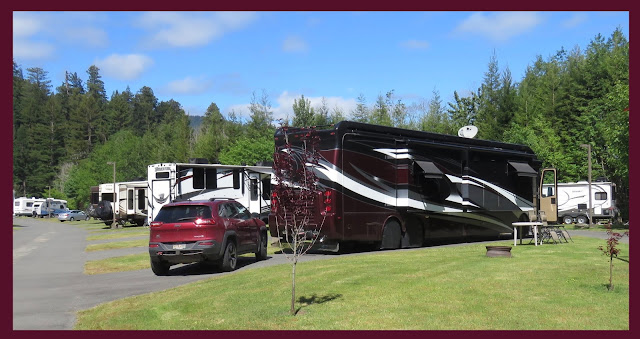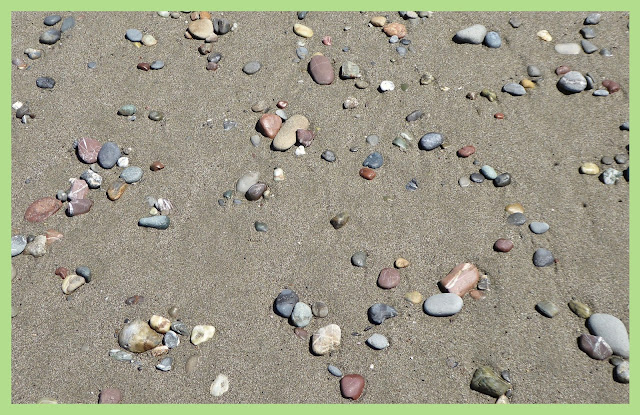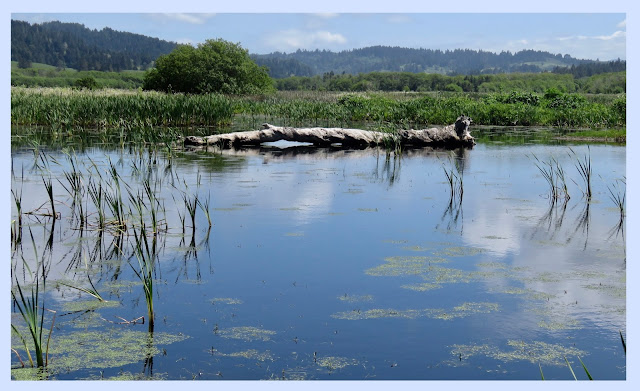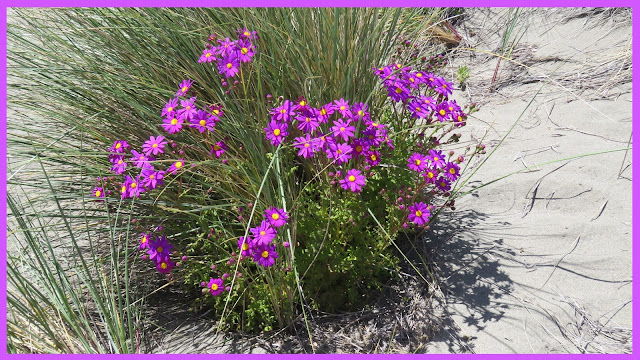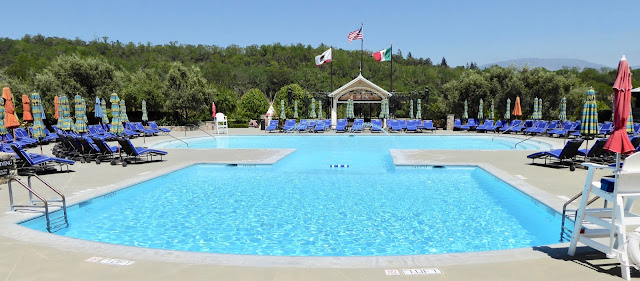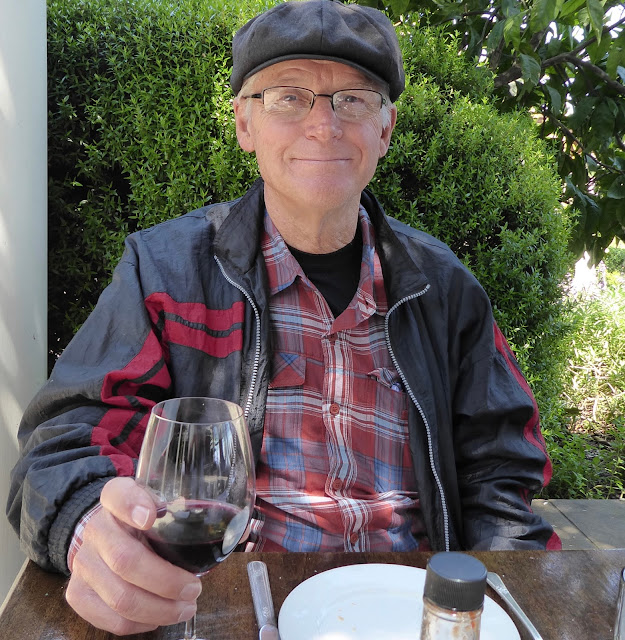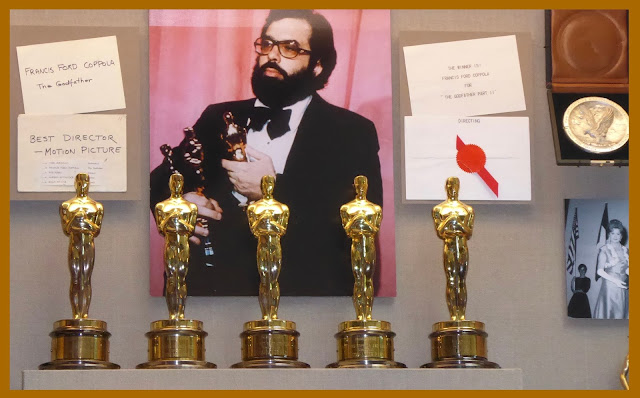Carol writes: Our next “home” on the California coast was at Ancient Redwoods RV Park, a sunny, open camp surrounded by some very tall trees.
We discovered that we had not tired of hikes in the Northern California redwood forests. We continued to maintain that a walk among these ancient giants, some of which were 1000-2000 years old, was a magical, breath-taking experience filled with “silence and awe,” as John Steinbeck so aptly stated.
If it wasn’t for the efforts of the State of California and a small band of farsighted preservationists, these priceless specimens of Nature would have disappeared off the face of the Earth over a century ago when California’s early settlers began to chop the redwoods down in their zeal to clear acreage for ranching and farming.
Our most rewarding hikes were in Humboldt Redwoods State Park, just down the road on the Avenue of the Giants. This state park claimed to have the largest remaining old-growth (never logged) forest in the world.
My camera did not survive my recent fall on the trail; however, a new Lumix offered various photographic techniques that made picture-taking a whole lot more fun… like this “stitched together” landscape feature that enabled me to get the entire height of the 359-ft Tall Tree in a single photo!
Although our campground named their very own redwood Immortal Tree,
we discovered that redwoods really did have a finite life cycle which inevitably culminated in toppling to Earth, chiefly due to high winds, fire or unusual flood events.
We learned that redwood roots are shallow (only 6-12 feet deep) and there is no taproot, but their roots extend outward over several hundred feet and often link up with neighboring trees, thus giving them additional stability. As expected, sometimes the crash of a toppled tree can be quite violent.
Then, in the never-ending cycle of Nature, fallen trees serve as excellent “nurse logs” on which fallen needles collect and compost, eventually forming a very thin layer of soil. As such, a thriving environment has been born for ferns and redwood sorrel, the predominant ground cover of the forest.
On one of our trails, a fallen redwood spanned a creek and provided the only means of crossing the water without getting wet.
Al seemed to be a lot more surefooted on that giant log than I was…
Across the creek at Giant Tree
we witnessed a surprise marriage proposal from a guy with a dog to a girl carrying a parrot and its cage on her back!
By some stroke of luck, I felt I captured “the exact moment” perfectly. I emailed the photo to the future bride’s mother, who in turn was most grateful and called me her “trail angel”…
For three days we took hikes in Humboldt Redwoods State Park. We repeatedly stretched our necks to look up, but also spent a fair amount of time looking down in the search for one of those elusive giant banana slugs we had read about. Finally, we were rewarded when a little girl and her family shared their discovery with us.
Flowers, such as red clintonia,
and gently scalloped vanilla leaf ground cover
looked unexpectedly tropical.
Graceful trillium
and fungal growth (?) on decaying logs had a beauty of their own.
We didn’t spend our entire two-week stay wandering around in the forest but also took time to check out Eureka, a quaint Victorian seaport town just up the coast. The old-town retail businesses of Eureka oozed Victorian charm.
The 1889 Carson House, otherwise known as the Pink Lady, was the crown jewel of Victorian elegance. This home was built by lumbar baron William Carson as a wedding gift for his son Milton.
Across the street was another Victorian beauty—the brooding Victorian Ingomar Club—so exclusive that we couldn’t even go inside for a tiny little peek…
Neighboring homes were certainly up to private club standards.
On another day’s excursion we took in tiny Ferndale,
which has the distinction of being a set location for the 1995 movie thriller Outbreak. On the day of our visit, the streets of Ferndale showed none of the panic of a cataclysmic outbreak of an Ebola-like virus as portrayed in the movie.
The beach on the outskirts of Ferndale had some of the finest examples of beach pebbles that I have come across.
My newly repotted cactus “houseplants” have acquired some pretty snazzy beach pebbles to compliment a new planter.
We found a local well-known point of interest near Redcrest in the gently rolling hills of the Eel River valley
at the Loleta Cheese Factory. Lunch in the backyard gardens of the ‘grilled cheese bar and coffee shop’ was scrumptious. A delightful talk with the owner about raising dairy cows answered a lot of questions that had been on our minds. (How do the cows know when to be milked?)
We have been exposed to a whole new way of cooking the simple grilled cheese sandwich—from now on it will be with some good bakery bread and a minimum of two different cheeses.
To alleviate some of the guilt of a healthy dose of fat grams at the cheese factory, we stopped by a national wildlife refuge on the way home. It was a nice change to stroll in a tranquil scene out from under trees,
with only red-winged blackbirds
and various waterfowl to keep us company.
We spent a most enjoyable two weeks in Redcrest on the Avenue of the Giants. The quaint Victorian villages were a fun trip back in time, but it was the sense of spirituality and peace among the redwoods that was seared into our memories.
What surprised us was how quiet it was in a redwood forest that was absent the background din of hundreds of visitors. Perhaps the super-high redwood canopy served as a sound barrier that blocked the usual sounds of Nature created by birds and ground animals. Indeed, except for a slug or two, every grove of giants revealed very few ground animals. Was there no attractive food source for squirrels?
Being surrounded by a scenario that harkened back to a prehistoric era before man came on the scene, I felt like I should be asking, “Where are the dinosaurs?” Perhaps you could say it was the trees that ruled the roost and enforced natural selection on the hierarchy of life.
What we discovered was that the primordial story the redwoods revealed to us was actually only a mirage of silence…
… In reality, their silence WAS a conversation.

